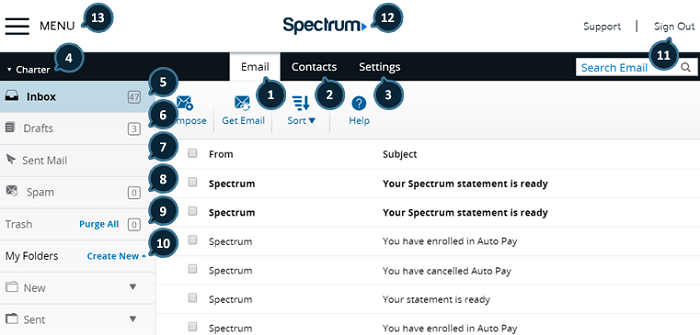

Acting early can make a big difference in your child's development! If you're uneasy about the doctor's advice, seek a second opinion.ĭon't wait. Together, you and your pediatrician will find the best way to help your child. Remember, you know your child best and your concerns are important.
SPECTRUM SIGN IN HOW TO
Before you go to the appointment, complete aįree developmental milestone checklist, and read these tips about " How to Talk with the Doctor." If you have concerns about how your child plays, learns, speaks, acts, or moves, talk with your pediatrician. May have unusual use of vision or gaze-looks at objects from unusual angles May be very sensitive or not sensitive at all to smells, sounds, lights, textures, and touch

May not cry if in pain or seem to have any fear Plays with parts of toys instead of the whole toy (e.g., spinning the wheels of a toy truck) May be obsessed with a few or unusual activities, doing them repeatedly during the day Likes routines, order, and rituals has difficulty with change or transition from one activity to another

(called "stereotypic behavior" or stereotypies) Rocks, spins, sways, twirls fingers, walks on toes for a long time, or flaps hands May lose language or other social milestones, usually between the ages of 15 and 24 monthsīehavioral differences (repetitive & obsessive behaviors) in children with autism
SPECTRUM SIGN IN TV
May have a good rote memory, especially for numbers, letters, songs, TV jingles, or a specific topic Less likely to use toys or other objects to represent people or real life in pretend play Less likely to start or continue a conversation May show no or less interest in communicating May refers to self as "you" and others as "I" and may mix up pronouns May not respond to name being called but does respond to other sounds Repeats exactly what others say without understanding the meaning Says no single words by 15 months or 2-word phrases by 24 months Less likely to point at things to indicate needs or share things with others Has difficulty making and keeping friendsĬommunication differences in children with autism Has difficulty perceiving what others might be thinking or feeling by looking at their facial expressions Many not have appropriate facial expressions Less likely to bring objects of personal interest to show to a parent May not point to objects or events to get a parent to look at them May not look at objects or events a parent is looking at or pointing to Shows no or less response to a parent's smile or other facial expressions May not keep eye contact or makes little or no eye contact The number and severity of symptoms can varyĪ lot! Social differences in children with autism Keep in mind: one child with ASD will not have exactly the same symptoms as another child with ASD. Here are some examples of social, communication, and behavioral differences in children with autism. In addition to speech/language delays and behavioral differences, families may notice differences in the way their child interacts with peers and others. Because they usually sit, crawl, and walk on time, less obvious differences in the development of body gestures, pretend play, and social language often go unnoticed. Autism spectrum disorder (ASD) show developmental differences when they are babies-especially in their social and language skills.


 0 kommentar(er)
0 kommentar(er)
